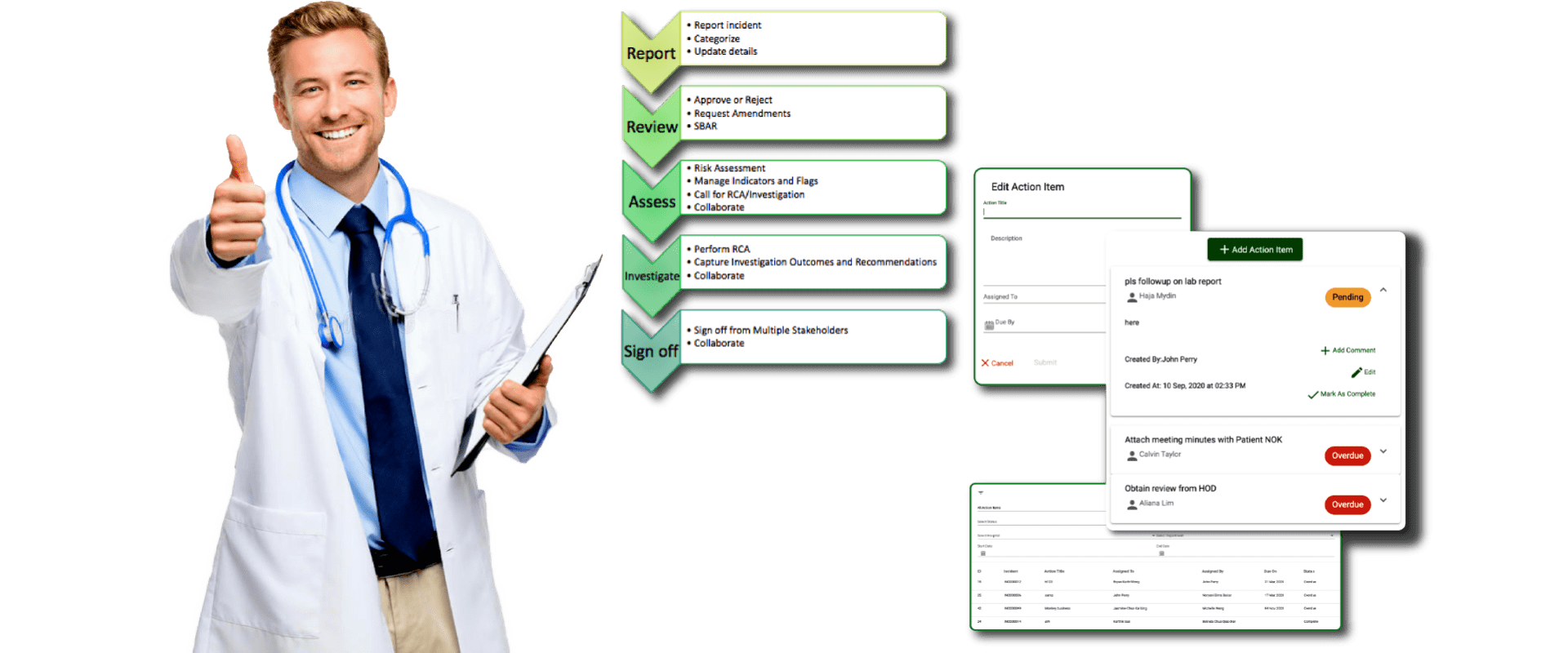
When we brainstormed the QUASR Lite design, we had a list of features for another version that’s slightly more advanced than Lite but not as involved as the Premium version. Even amidst our customers and prospects, we understand Lite is a little too simple for their process because they have had a computerized system in place for a while and are familiar with the advantages of having one. They need to upgrade but are not ready to set aside budgets or time for enterprise implementation.
So we built QUASR Basic to give you a flavor for what the enterprise system can do for you without having to go through full implementation. There are limitations, of course. In this post, allow us to introduce QUASR Basic to you.
QUASR Basic is Lite with an automated workflow
QUASR Basic is Lite with a workflow. It does not have all Premium version features and will probably remain that way for more time. BASIC and Premium target different types of organizations.
BASIC targets single/independent hospitals, which are:
1) accustomed to having a system in place.
2) using Lite for a while and want to graduate their process.
3) Enterprise-ready users who wish to try QUASR before taking on an enterprise implementation.
I hope we convinced you to read on, as this might be just what you need at your org right now.
What do we mean by a workflow anyway?
In Lite, when you report an incident, the system doesn’t do much apart from saving it to a database and ensuring the data’s integrity. In BASIC, however, a few things happen: the system triggers an email to a pre-designated group of Quality Managers as soon as you report an incident.
The incident details collected also contain additional information such as the Supervisor for the incident, a team of investigators, a group of people to sign off on the incident etc. Each of these is a stage in the incident lifecycle. The Supervisor assigned is then required to perform the review and fill in the SBAR. Similarly, upon quality review completion, the investigation report can be updated and so on. This linearizing sequence of events in the incident lifecycle is what we call the “workflow”.
There’s more to QUASR Basic compared to QUASR Lite
But that’s not all of it either. There are more things under the hood in BASIC as compared to Lite. Flags assigned to incidents in Lite are merely indicators. They help you identify or classify incidents at a glance. However, in BASIC, you can use Flags to include pre-designated people in the incident loop. They’d automatically get notifications and access to the incident details.
Similarly, you can add other users to the incident and notify them of the occurrence – voluntarily. These might be other department heads or an HR supervisor or a Line supervisor instead of the department supervisor. These users would otherwise not have access to the incident or its details.
One last thing to highlight about Basic would be the “Sensitive Incidents” feature. We will write a detailed note on sensitive incidents in another post in the future. But for now, sensitive incidents are a type of flag that limits the access to the incidents to a predetermined group of users – Quality Managers, investigators and other management level users. QUASR does not have an opinion on how or when to use this flag. We leave it to our customers to use it as they see fit in their organization.
QUASR Basic vs QUASR Premium
Lastly, as I mentioned, BASIC is Lite with automated workflow.
But how does Basic compare to Premium?
Premium targets a group of institutions as opposed to independent hospitals or providers. A group has other requirements in terms of uniformity of process across their participant hospitals. They tend to prefer a single cluster implementation where the group management can get their dashboard with the essential information they need about the overall incident performance.
BASIC, on the other hand, does not support a cluster implementation. There are other differences in terms of support access, implementation, customization provisions in Premium that aren’t available in Basic.
For more information, check our pricing page, and it’d be able to give you even more clarity on both these versions and options.






